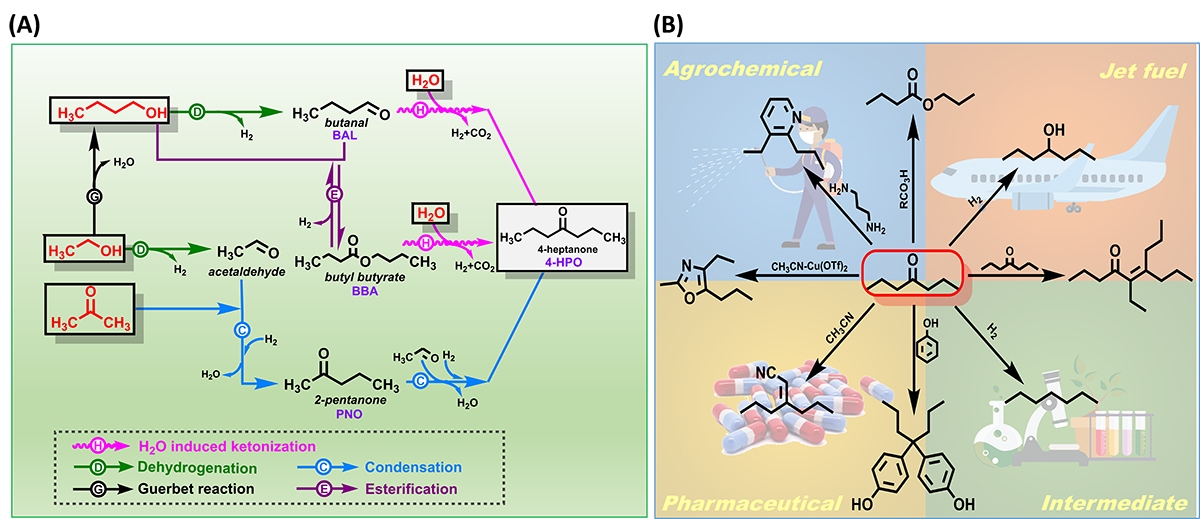Biomass can serve as a renewable source for both energy and carbon. ABE (acetone, n-butanol, and ethanol) fermentation broth as a biomass-derived source of fuels and chemicals has received a lot of attention for several decades. However, the crude fermentation broth contains low concentrations of oxygenates, limiting its practical applications.
Thus, it is pivotal to develop a highly efficient water-resistant catalyst to directly and selectively convert crude aqueous oxygenate mixtures to value-added chemicals; water-immiscible ones (easy separation after reaction) are especially of great importance. However, the efficiency and selectivity of the transformation process for biomass-derived intermediates remains a major techno-economic challenge.
Prof. WANG Feng from the Dalian Institute of Chemical Physics of the Chinese Academy of Sciences, and his colleagues from Peking University, recently reported an efficient and novel catalytic method for the conversion of aqueous biomass fermentation broth to a water-immiscible product. Their finding is published in Nature Communications (DOI: 10.1038/s41467-018-07593-0).
They developed a strategy capable of transforming ~70% of carbon in an aqueous ABE fermentation mixture to 4-heptanone (4-HPO), catalyzed by tin-doped ceria (Sn-ceria) with a selectivity as high as 86%. While Sn-ceria is a versatile catalyst for dehydrogenation, the Guerbet alcohol reaction, condensation, and esterification reactions, all these reactions, involving acid-base catalysis and redox ones, relay and generate 4-HPO with high selectivity(Fig.(A)). 4-HPO is a value-added intermediate and can be used to produce jet fuel and fine chemicals (Fig. (B)).

(A) Proposed reaction pathways leading to 4-HPO. (B) 4-HPO utilization.(Image by WANG Yehong)
Furthermore, water, which is detrimental to the reported catalysts for ABE conversion, was beneficial for producing 4-HPO. The excellent catalytic performance of tin-doped ceria is due to the highly dispersed tin species and oxygen vacancies of ceria.
"This strategy offers a route for highly efficient organic carbon utilization," said WANG. "It can potentially integrate biological and chemical catalysis platforms for the robust and highly selective production of value-added chemicals."
The research was supported by the Strategic Priority Research Program of the Chinese Academy of Sciences, the National Key R&D Program of China, and the Natural Science Foundation of China. This work is also dedicated to the 70th anniversary of Dalian Institute of Chemical Physics, CAS. (Text by WANG Yehong)